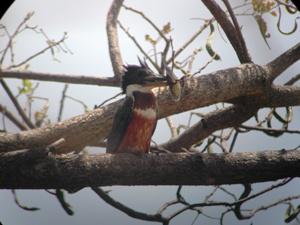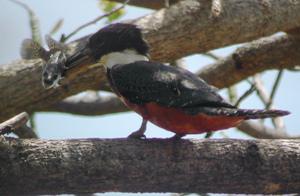Florencia Andrea Trama
Other projects
6 Jan 2011
Conservation of Aquatic Resources and Biodiversity in Rice Fields and Mangroves of Piura, Peru
To know if pesticides are being bioacumulated on aquatic biodiversity and how this could be affecting local people.

Rice fields are artificial wetlands with high biodiversity but often fauna is affected by pesticides used in rice crops.I carried out my PhD thesis in the lower basin of the Piura River. I identified macroinvertebrates as bioindicators of water quality in rice fields and I evaluated highly toxic pesticides used without control in this agro-ecosystems. Drainage is discharged into natural streams and nearby mangroves, altering these fragile and dynamic ecosystems.

I detected 8 pesticides in water, two of them reaching the mangroves with higher concentrations than permitted by law and one of them prohibited at national and international level. Additionally, more than 40 pesticides are being used by farmers and these could also be affecting fauna. Insects and crustaceans are the most affected fauna. However, these are very important for other aquatic fauna that feed from them and they could also being affected.
This project will continue with the research about pesticide effects on wildlife. Pesticides reaching the mangroves could be bioacumulated in aquatic fauna and perhaps biomagnificated in upper levels of the trophic net. Local fishers and collectors obtain their source of protein from the mangrove´s estuary.
In this project we will evaluate the bioaccumulation on different organisms (fish and invertebrates). Fish are a very important food sources for local and regional people that use the mangroves and invertebrates are a very important part of the food net. It is very important to know if pesticides found in the mangroves are being accumulated in animal tissue and could affect the local and regional human population.
We will carry out samplings at a main drainage channel and at the mangroves in order to get samples of invertebrates (with surber nets) and fish with hand nets. 18 will be collected, 9 in the channel that goes to the mangroves and 9 inside the mangroves area. I can evaluate two kinds of invertebrates (clamps and insects) and also fish considering 3 samples of each type of animal group.The complete animals will be refrigerated to be transported to the laboratory where small tissue samples will be analyzed for pesticides detection and concentration. We will test 120 pesticides using LC/MS/MS and GC/MS methods.
If we find pesticides in tissue, we will compare pesticides detection and concentrations between sampling points (channel and mangroves) and type of animal group using GLM analysis.